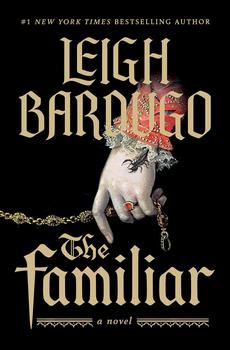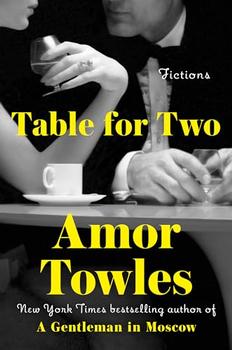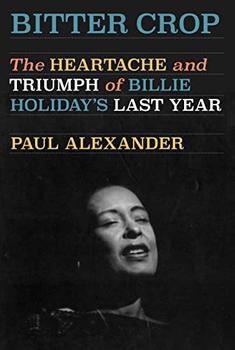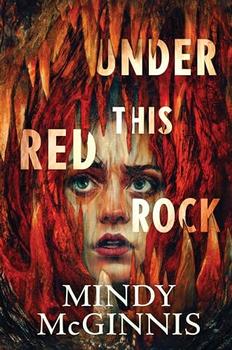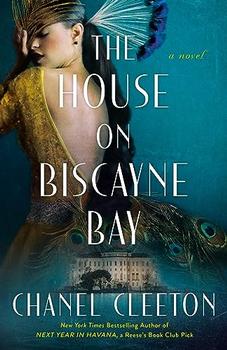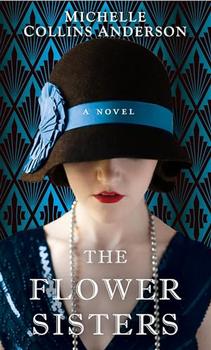History of the New York City Theatre Scene (04/20)
The New York City borough of Manhattan sometimes seems like it's much older than it actually is, given its massive scale, impressive infrastructure, and cultural impact. However, it was only in the 1850s that work began on Central Park, and Manhattan started to rapidly expand north of 14th Street. Times Square was only so named in 1904, ...
Controversial 20th Century Female Photographers (03/20)
Lillian Preston, the photographer at the heart of Feast Your Eyes, is fictional, but there are a number of controversial 20th century female photographers on whom she could be based, including Diane Arbus (1923-1971), Irina Ionesco (b.1930) and Sally Mann (b.1951).
Born Diane Nemerov, 18-year-old Diane Arbus received her first camera ...
Lee Lozano's Dropout Piece (03/20)
In Fake Like Me, author Barbara Bourland alludes to artist Lee Lozano (1930-1999) and her elusive, controversial final project called Dropout Piece. This piece of performance art was Lozano's act of withdrawing from the art world in order to be an outsider. She slipped into isolation through the end of her life, pushing the boundaries of ...
The Power of Polaroid Photography (02/20)
Once upon a time, long before digital photography became commonplace, the only way to instantly see the results after taking a photo was by using a Polaroid instant camera. In Lost Children Archive, the narrator gives her stepson a Polaroid camera for his tenth birthday. He takes photos during their trip, and a series of Polaroid images ...
Iranian Cuisine (02/20)
In Marjan Kamali's novel
The Stationery Shop, Iranian food plays a central role, whether a simple melon smoothie drink, hot tea sweetened with rock sugar candy (
nabat), or a more complicated feast for Persian New Year. Traditional cuisine from Iran, also known as
Persia, is a mélange of many cultures partly due to a vibrant trading ...
Gaudeamus Igitur (So Let Us Rejoice) (01/20)
The title of the novel Vita Nostra by Marina and Sergey Dyachenko comes from a verse in the Latin song popularly known as Gaudeamus Igitur ('So Let Us Rejoice'). The work's lyrics urge their audience to enjoy all the pleasure they can because all will end too soon, and they also praise the student lifestyle. Although most often considered...
The Restoration of Dorothy's Ruby Slippers (01/20)
Finding Dorothy is the fictionalized story of Maud Gage Baum, the wife of L. Frank Baum of The Wonderful Wizard of Oz fame. Through dual narratives, Elizabeth Letts explores the lives of the Baums and the inspirations that led Frank to pen his famous novel, while also featuring Maud's fight to see her husband's work honored as it was ...
String Quartets (08/19)
In the second half of the eighteenth century, chamber music, which was played by ensembles (small groups of musicians and thus suitable for smaller rooms), became very fashionable. The term 'ensemble' comes from the Old French word for 'together' and can refer to a grouping of any size, from a duet up to a full orchestra. The Dublin-based...
Popular Los Angeles-area Bookstores (08/19)
In Glen David Gold's memoir's second section, Gold recalls his experiences working at a branch of Hunter's Books in the Westwood neighborhood of Los Angeles (near UCLA) during a gap year he took in college. Hunter's, as Gold notes, was 'part of a local handful of stores that wouldn't survive the new realities of commerce.' Indeed, ...
The Art of Capoeira (07/19)
In 'Everything the Mouth Eats,' one of the stories in A Lucky Man, the martial art/dance form of capoeira takes center stage.
Capoeira originated in Brazil possibly among enslaved Africans who were brought to work the land for the Portuguese overlords. The South American country was ruled by the Portuguese from 1500 to 1815 and during...
Political Puppetry (07/19)
While staying at an island resort, the protagonist of the title story of Deborah Eisenberg's Your Duck is My Duck meets another artist, a puppeteer who is crafting a performance about their benefactors' mistreatment of the island's farmers. Eisenberg is drawing from a long history of puppetry as a political tool wielded by artists ...
The Chanson Musical Tradition (07/19)
Alfred Busi, the protagonist of The Melody, is described by author Jim Crace as being a singer in the European chanson tradition. This lyrically-drive musical form originated in medieval France as the chanson de geste ('song of heroic deeds'), epic poems recounting the glorious tales of famous heroes set to music. The songs employed basic...
The History of Tiffany's (07/19)
Much of the action in M. J. Rose's novel Tiffany Blues takes place at Louis Comfort Tiffany's fabulous estate near Oyster Bay, New York. It's an 84-room mansion, standing on over 60 acres of lush landscaping, all conceived and designed by Louis himself. Since the late 1800s he had been the chief creative force behind the ...
Drive-In Theaters (05/19)
Realizing her dreams of becoming a Hollywood actress are dwindling, Tammy Treeborne - a central protagonist in Treeborne - decides to indulge her passion for the movies in another way, by opening her very own drive-in theater in Elberta, Alabama.
The drive-in theater is an American icon, itself immortalized in countless classic ...
The National Film Board of Canada (04/19)
The title of Heather Smith's novel,
The Agony of Bun O'Keefe, is inspired by a 27-minute documentary called
The Agony of Jimmy Quinlan [see full film below], which was produced by the
National Film Board of Canada in 1978. The film chronicles the effort of Quinlan, one of 5,000 people living on the streets in Montreal, to get ...
Great Topiary Gardens (04/19)
Mike Muñoz might be a magician with a mower and a wizard with a weed whacker, but his real talent is topiary. If, like Mike, you thrill to see people, animals and mythical creatures carved from living trees and shrubs, here are a few great public topiary gardens to add to your itinerary.
Levens Hall, Cumbria, England
Regarded as ...
Ancient Cartography (04/19)
Mapmaking has been a vital part of human curiosity for millennia. The oldest known world map is the Babylonian Map of the World, also known as the
Imago Mundi, which dates back to the 5th century BCE. This early map is not alone. Archaeologists have found many map-like representations in caves, some of which even show images of star ...
The Charkha (03/19)
In Girls Burn Brighter, the charkha, a kind of spinning wheel, is a means of self-sufficiency and independence for Poornima and Savitha. Savitha carries the scraps of the sari she made for Poornima across the world, as a reminder of the simple happiness the two girls found when weaving together.
The charkha is one of the oldest known ...
Notable Female Indian Filmmakers (02/19)
At one point in Love, Hate, and Other Filters, Maya's best friend Violet tells her that love is 'a part of who you are, not an object you can film and capture in different kinds of light.' Maya is used to viewing the world - including her own life - through the lens of film. She wants to be a documentary filmmaker, and Ahmed's novel ...
Vinyl Records (11/18)
Despite the many digital streaming options for listening to music, vinyl records are still popular with some listeners. Like Frank in The Music Shop, many music aficionados love the sound quality of vinyl records and nostalgia has increased their popularity. Vinyl records still comprise a noticeable portion of the market. According to the...
Performance Poetry and Slams (07/18)
Most sources date the first 'poetry slam' to Chicago in 1984, when the American poet Marc Kelly Smith held the first open mic. According to the
Encyclopedia Britannica, Smith did this because 'poetry readings and poetry in general had lost their true passion' and he wanted to 'bring poetry back to the people.' So he initiated the weekly ...
Traditional Cambodian Music (04/18)
Traditional Cambodian music plays a key role in Music of the Ghosts. Hearing it triggers memories for both of the story's main characters, and three hand-made instruments—a single-stringed lute, an oboe, and a drum—set the plot in motion.
Music and Buddhism have a strong connection; music is sometimes seen as a ceremonial ...
Music During Nero's Time (04/18)
The appreciation of music seemed to be one of Emperor Nero's favorite pastimes. He not only organized musical competitions, but played several instruments himself.
Brass instruments such as the tuba (a long, straight trumpet-like device) and the cornu (the precursor of the French horn) were mostly used by the military of the day ...
Christina's World (02/18)
Andrew Wyeth's painting Christina's World, the subject of A Piece of the World, was initially met with little fanfare, and its critical reception was lackluster. Nevertheless, the painting, which features Christina Olson reaching toward her home in the distance, was purchased during its first showing at a New York Gallery in 1948 by ...
The Art of Glassmaking (01/18)
At one point in Glass House, Brian Alexander describes his childhood experience of peering into one of the glass manufacturing plants in his home town: 'Nuns had spent years engraving images of hell on my imagination. The flames shooting out of the squat stack on the roof, the white-red glow of the furnace inside, the gray shadows of the ...
Paul Gauguin: A Flawed Artist (12/17)
In Castle of Water, one of the characters is headed to the Marquesas Islands, part of French Polynesia, because he wants to pay his respects to the renowned French painter, Paul Gauguin, who breathed his last there.
Paul Gauguin was born in 1848 in France to a French father and a mother with mixed French and Peruvian heritage. While ...
Tell it to the Book-keeper (11/17)
'Want to know what a book-keeper's job is, boy?' he muttered. 'We keep the actors from ruinin' the play.'
Emma thinks her sudden promotion to stage manager of her high school's drama department is a stretch in Molly Booth's debut novel Saving Hamlet but it is nothing like the crash course she receives when she finds herself in the ...
Arts, Artists and Authoritarianism (11/17)
In This is How It Begins, Ludka Zeilonka, art history professor and survivor of the World War II Nazi invasion of Poland, rescued a valuable painting from certain theft or destruction at the hands of the Germans. She has kept it hidden for over 70 years, protecting it and keeping its provenance intact for posterity. As an idealistic young...
Storyboarding (09/17)
In The Animators, best friends Sharon and Mel spend hours hunched over their artwork that will form the basis of an animated movie. 'I know a day of work has been really good when I have to look up from the board and recall who I am and what I'm doing,' Sharon says. That 'board' that she refers to is one of a series of images that ...
Child Prodigies in Visual Art (07/17)
When we hear the phrase 'child prodigy,' our minds almost automatically go to Mozart and other musicians, and from there, towards young geniuses in the areas of mathematics and science. One of the shorter lists of child prodigies is in the visual arts: drawing, painting and sculpture. But the world has witnessed some exceptional artistic ...
Folk and Bluegrass Music (06/17)
In
Before We Sleep, Oliver, a World War II veteran, repairs fiddles for others to play folk and bluegrass tunes.
Fiddles and violins are essentially the same instrument (for more about this, read the '
Beyond the Book' for
Black River), but the music that they produce can be classified into different categories. According to
Strings ...
The Tango (04/17)
Fans of the ballroom dance known as the 'tango' probably think of it as synonymous with elegance and sophistication, with dazzlingly turned out women and men striding gracefully amid a throng of champagne-and-caviar glitterati. A fair impression, given the tango's portrayal in Hollywood movies and musicals. But the tango began more than a...
The Our Gang Films (01/17)
One of the central characters in The Sellout is Hominy Jenkins, an elderly black man who was, in his youth, a lesser-known member of the group of child actors featured in the Our Gang series of short films. Hominy Jenkins might be fictional, but Our Gang was certainly not. Produced from 1922 to 1944 by comedy producer Hal Roach, the ...
Arts Education Empowers Youth with Disabilities (01/17)
Aristotle once said, 'Educating the mind without educating the heart is no education at all.' Those words were uttered nearly 2,400 years ago, but they are still relevant today. Education that gives meaning is the kind of learning that we remember. Today, art education is one place where teenagers learn about the world surrounding them ...
Kenneth Lochhead's "Flight and Its Allegories" and the Gander International Airport (01/17)
If you flew on a transatlantic flight at some point in the mid-twentieth century, odds are you found yourself at Gander International Airport in Gander, Newfoundland, on at least one leg of your journey. For years, before the advent of wide-body jets with higher fuel capacity, Gander was the main refueling stop for aircraft bound for the ...
Diego Velázquez's Contemporaries (11/16)
Diego Velázquez (1599 - 1660) was a painter in the court of Spain's Philip IV during the Spanish Golden Age (Siglo de Oro), a period influenced by the Italian Renaissance, during which the arts flourished throughout the country. The exact dates of the Spanish Golden Age vary by commentator, but it began no earlier than 1492 with ...
The Thorne Rooms (10/16)
In The Making of Home, Judith Flanders argues that it can be difficult to know what ordinary homes throughout history looked and felt like, in part because museums with 'period rooms' tend to devote precious space to recreating the opulent homes of wealthy figures from the past. Perhaps it's much more fun to look at ceilings replete ...
Haiku (09/16)
at my feet
when did you get here?
snail
- Kobayashi Issa (1763-1828)
It's no coincidence that Elisabeth Tova Bailey chose Kobayashi Issa as one of several selected poets to gently ease us into the passages of The Sound of a Wild Snail Eating. The haiku poet's simplicity and grace complement Elisabeth Tova Bailey's quiet ...
Art Inspired by 9/11 (09/16)
The events of September 11, 2001 changed the world in many ways and naturally, that change has been reflected in the arts and humanities. In film, fiction, theatre and more, artists from across the globe have responded to the tragedy in many ways and on many levels.
'After 9/11,' writes Jill Bialosky in her novel The Prize, 'many ...
Chechen Painter Pyotr Zakharov-Chechenets (08/16)
A fictional nineteenth-century pastoral painting by real-life Chechen painter, Pyotr Zakharov-Chechenets, features in one of the stories in The Tsar of Love and Techno.
Pyotr Zakharov-Chechenets was born in 1816 during the Caucasian War, which was the subject of historical fiction from Tolstoy, Lermontov, and Pushkin. In 1819 the three...
Imitation: Flattery or Fraud? (06/16)
The legitimacy of a painting that hangs in the hotel of the murder victim, Pierre-Louis Pennec, is at the heart of Jean Luc-Bannalec's
Death in Brittany. Is it a forgery or is it an authentic Gauguin?
There is popular story among writers about world-famous author Jack London (
Call of the Wild, White Fang).
Rumor has it that he ...
Artists Who Painted Their Wives (04/16)
In Paint Your Wife, Alma Martin, though just thirty and physically healthy, was left behind while other fit men went to war. The loss of both his young wife and some of his memory in a train accident had rendered him 'a less-than dangerous male. A male without horns.' During his rehabilitation, he began to draw. Art became his obsession; ...
Installation Art (03/16)
In The Wonder Garden, one of the stories, 'Swarm,' features a sculpture created by local artist Martin who is commissioned to meticulously craft thousands of different bugs to carpet the exterior surface of a neighbor's house. Should it also be considered installation art?
Installation art is a form of art where a variety of ...
Kilim (02/16)
In Orhan's Inheritance, Orhan and his family are makers of kilim rugs, a type of carpet manufactured in Turkey using a technique referred to as 'flatweave' (i.e., a rug that is woven rather than knotted). Dating back to at least 4th century China, this type of rug is common throughout Central Asia, and is known as a palas (Ukraine);...
Crafting a Violin (01/16)
In Black River, Wes's father made a handmade fiddle for his son. This treasured belonging supports many of the story's themes. The fiddle itself is a multi-sensory object. Beyond its key function of making music, it is also visually beautiful, and provides a tactile and kinesthetic release for Wes.
A fiddle and a violin are pretty much...
Charles Rennie Mackintosh ("Mr. Mac") (11/15)
Mackintosh (1868–1928), one of the central characters in Esther Freud's Mr. Mac and Me, was one of 11 children born to a police superintendent and his wife in Glasgow, Scotland. Early on he showed promise as an architect, winning the 1890 Alexander Thomson Traveling Studentship, which funded his travel around Europe to study classic...
A History of Fresco that Leads to Francesco del Cossa (11/15)
Early Fresco Painting
Ali Smith's How to Be Both was inspired by a book she found about frescoes. Fresco, meaning 'fresh' in Italian, is the technique of painting in water-based pigment on wet plaster so that the plaster, paint and wall fuse into a single entity. The earliest known examples date from c. 1500 BCE, on the island of Crete, ...
Patrick Blanc And the Vertical Garden (10/15)
In the past twenty years, planted walls and vertical gardens, one of the many innovations showcased in
The Human Age, have gone from novelty to mainstream, as part of the
reconciliation ecology movement that is working to preserve or increase urban biodiversity. All around the world, vertical gardens are creating dynamic ecosystems that ...
Michelangelo and Six of His Greatest Works (09/15)
During his long life Michelangelo created numerous great works of art. Six are particularly renowned and are located either in Rome or Florence. In his book Michelangelo: A Life in Six Masterpieces, Miles J. Unger examines the artist through these monumental works. The following offers a condensed history and description of each.
Piet&...
